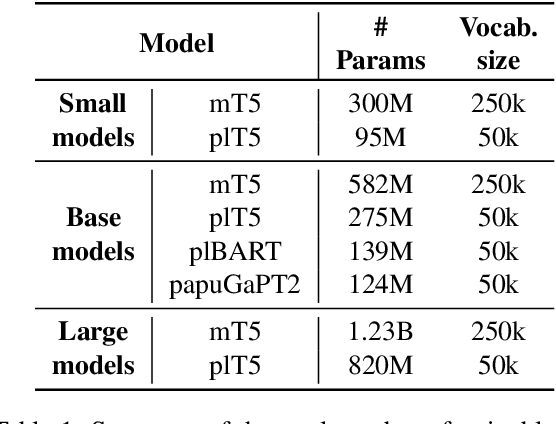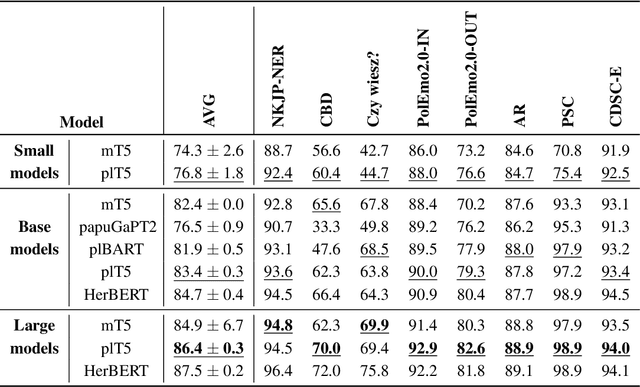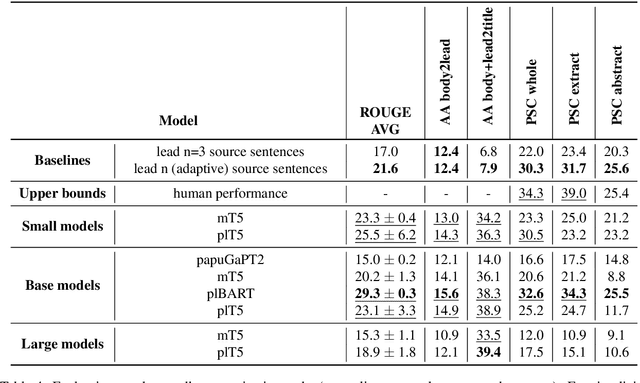Robert Mroczkowski
Going beyond research datasets: Novel intent discovery in the industry setting
May 09, 2023Abstract:Novel intent discovery automates the process of grouping similar messages (questions) to identify previously unknown intents. However, current research focuses on publicly available datasets which have only the question field and significantly differ from real-life datasets. This paper proposes methods to improve the intent discovery pipeline deployed in a large e-commerce platform. We show the benefit of pre-training language models on in-domain data: both self-supervised and with weak supervision. We also devise the best method to utilize the conversational structure (i.e., question and answer) of real-life datasets during fine-tuning for clustering tasks, which we call Conv. All our methods combined to fully utilize real-life datasets give up to 33pp performance boost over state-of-the-art Constrained Deep Adaptive Clustering (CDAC) model for question only. By comparison CDAC model for the question data only gives only up to 13pp performance boost over the naive baseline.
Evaluation of Transfer Learning for Polish with a Text-to-Text Model
May 18, 2022



Abstract:We introduce a new benchmark for assessing the quality of text-to-text models for Polish. The benchmark consists of diverse tasks and datasets: KLEJ benchmark adapted for text-to-text, en-pl translation, summarization, and question answering. In particular, since summarization and question answering lack benchmark datasets for the Polish language, we describe their construction and make them publicly available. Additionally, we present plT5 - a general-purpose text-to-text model for Polish that can be fine-tuned on various Natural Language Processing (NLP) tasks with a single training objective. Unsupervised denoising pre-training is performed efficiently by initializing the model weights with a multi-lingual T5 (mT5) counterpart. We evaluate the performance of plT5, mT5, Polish BART (plBART), and Polish GPT-2 (papuGaPT2). The plT5 scores top on all of these tasks except summarization, where plBART is best. In general (except for summarization), the larger the model, the better the results. The encoder-decoder architectures prove to be better than the decoder-only equivalent.
HerBERT: Efficiently Pretrained Transformer-based Language Model for Polish
May 04, 2021



Abstract:BERT-based models are currently used for solving nearly all Natural Language Processing (NLP) tasks and most often achieve state-of-the-art results. Therefore, the NLP community conducts extensive research on understanding these models, but above all on designing effective and efficient training procedures. Several ablation studies investigating how to train BERT-like models have been carried out, but the vast majority of them concerned only the English language. A training procedure designed for English does not have to be universal and applicable to other especially typologically different languages. Therefore, this paper presents the first ablation study focused on Polish, which, unlike the isolating English language, is a fusional language. We design and thoroughly evaluate a pretraining procedure of transferring knowledge from multilingual to monolingual BERT-based models. In addition to multilingual model initialization, other factors that possibly influence pretraining are also explored, i.e. training objective, corpus size, BPE-Dropout, and pretraining length. Based on the proposed procedure, a Polish BERT-based language model -- HerBERT -- is trained. This model achieves state-of-the-art results on multiple downstream tasks.
KLEJ: Comprehensive Benchmark for Polish Language Understanding
May 01, 2020


Abstract:In recent years, a series of Transformer-based models unlocked major improvements in general natural language understanding (NLU) tasks. Such a fast pace of research would not be possible without general NLU benchmarks, which allow for a fair comparison of the proposed methods. However, such benchmarks are available only for a handful of languages. To alleviate this issue, we introduce a comprehensive multi-task benchmark for the Polish language understanding, accompanied by an online leaderboard. It consists of a diverse set of tasks, adopted from existing datasets for named entity recognition, question-answering, textual entailment, and others. We also introduce a new sentiment analysis task for the e-commerce domain, named Allegro Reviews (AR). To ensure a common evaluation scheme and promote models that generalize to different NLU tasks, the benchmark includes datasets from varying domains and applications. Additionally, we release HerBERT, a Transformer-based model trained specifically for the Polish language, which has the best average performance and obtains the best results for three out of nine tasks. Finally, we provide an extensive evaluation, including several standard baselines and recently proposed, multilingual Transformer-based models.
 Add to Chrome
Add to Chrome Add to Firefox
Add to Firefox Add to Edge
Add to Edge